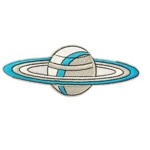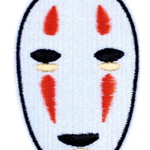FREE: 1 NEW Dream Catcher Patch IRON ON Adhesive Embroidery Clothing Accessory FREE SHIPPING

A member of Listia gave this away for free!
Do you want FREE stuff like this?
Listia is 100% Free to use
Over 100,000 items are FREE on Listia
Declutter your home & save money

"Listia is like EBay, except everything is free" - Los Angeles Times

"An Awesome Way To Give And Get Free Stuff" - Michael Arrington, TechCrunch
This Stuff is Free Too:

FREE

FREE

FREE

FREE

FREE
The listing, 1 NEW Dream Catcher Patch IRON ON Adhesive Embroidery Clothing Accessory FREE SHIPPING has ended.
1.New.Never Used. ~ Free Shipping!Iron-On Adhesive Back
(7.5 x 4.5 CM) (S)
Great for Clothing , backpacks, travel bags, baby onesie, hat, beenie, etc! Adhesive Applique Embroidery Clothing Accessories.
In some Native American cultures, a dreamcatcher or dream catcher (Ojibwe: asabikeshiinh, the inanimate form of the word for "spider", Lakota: iháŋbla gmunka) is a handmade willow hoop, on which is woven a net or web. The dreamcatcher may also include sacred items such as certain feathers or beads. Traditionally they are often hung over cradles as protection.
Dreamcatchers originated with the Ojibwe people and were gradually adopted by some neighboring nations through intermarriage and trade. It wasn't until the Pan-Indian Movement of the 1960s and 1970s that they were also adopted by Native Americans of a large number of diverse cultures. Some consider the dreamcatcher a symbol of unity among the various Indigenous Nations, and a general symbol of identification with Native American or First Nations cultures. However, many other Native Americans have come to see dreamcatchers as over-commercialized, offensively misappropriated and misused by non-Natives An Ojibwe legend recounted by American ethnographer Frances Densmore says the dreamcatcher originates with Spider Woman, known as Asibikaashi; she took care of the children and the people on the land. As the Ojibwe Nation spread to the corners of North America it became difficult for Asibikaashi to reach all the children. So the mothers and grandmothers would weave magical webs for the children, using willow hoops and sinew, or cordage made from plants: Even infants were provided with protective charms. Examples of these are the "spiderwebs" hung on the hoop of a cradle board. These articles consisted of wooden hoops about 3½ inches in diameter filled with an imitation of a spider's web made of fine yarn, usually dyed red. In old times this netting was made of nettle fiber. Two spider webs were usually hung on
1 NEW Dream Catcher Patch IRON ON Adhesive Embroidery Clothing Accessory FREE SHIPPING is in the Clothing, Shoes & Accessories | Wallets & Accessories category

